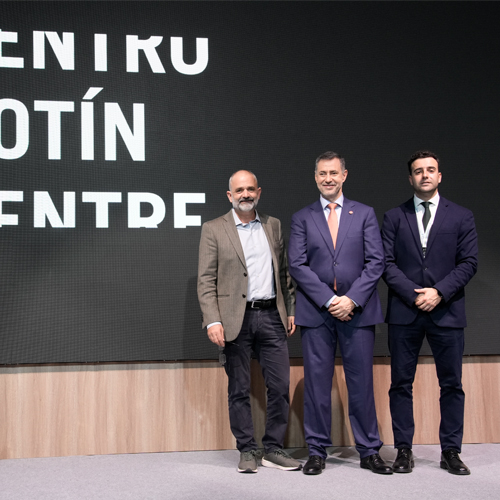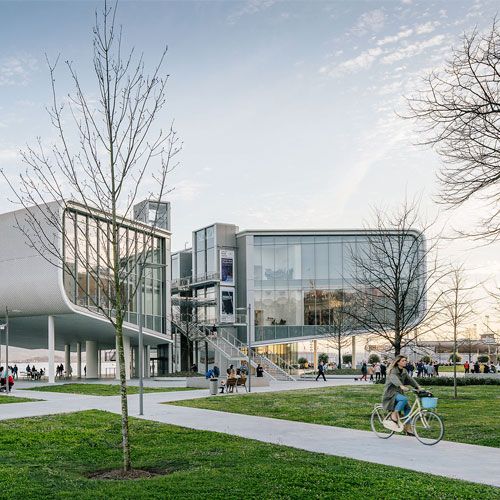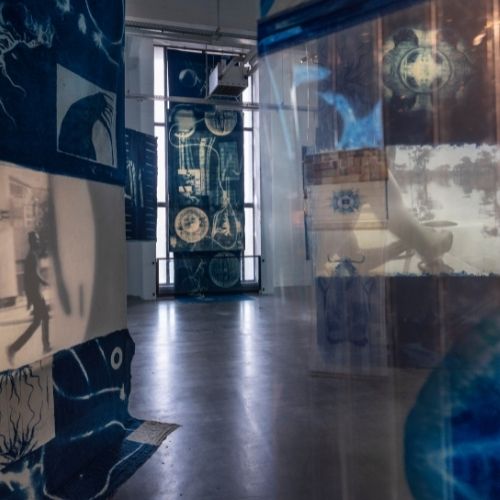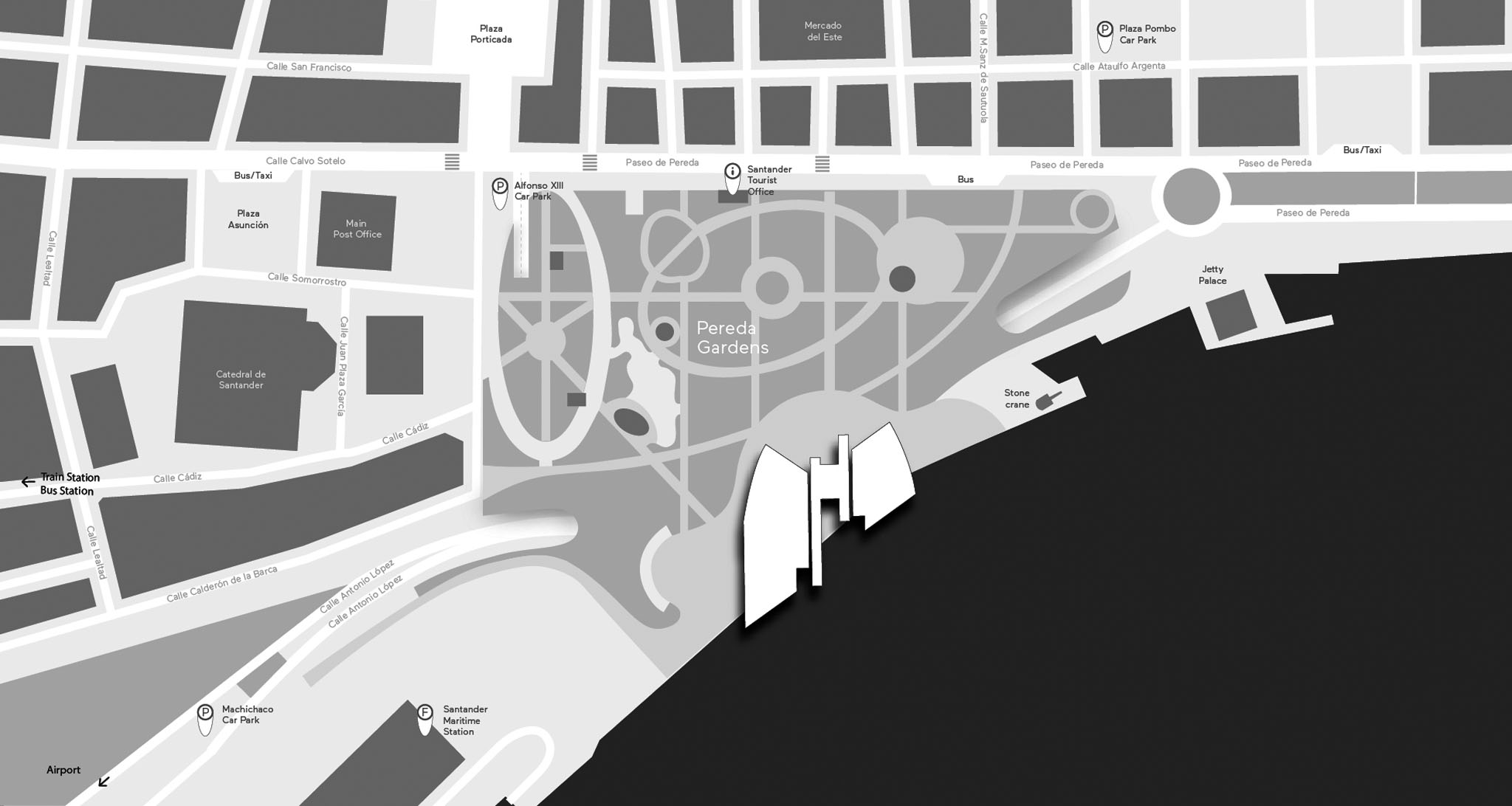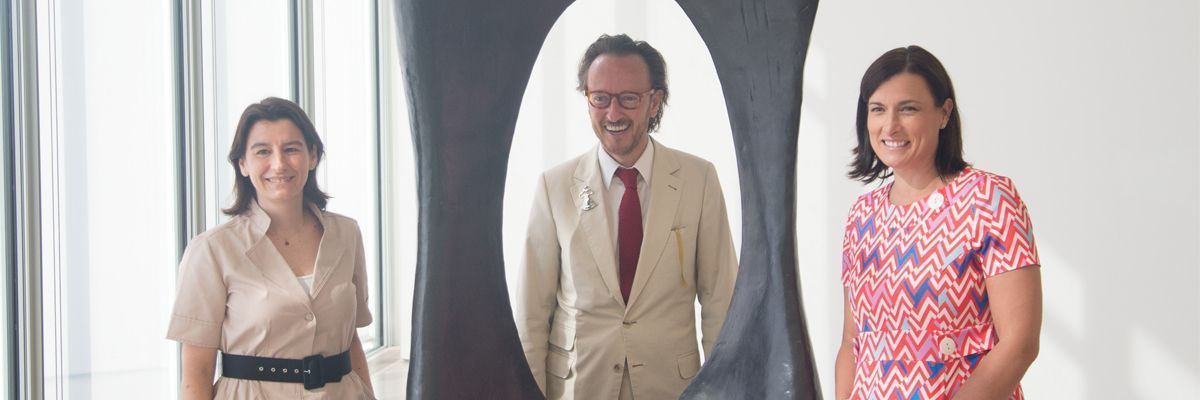
THE HEIRS OF JOAN MIRÓ CEDE FOUR OF THE ARTIST’S SCULPTURES TO THE CENTRO BOTÍN AND THE CITY COUNCIL OF SANTANDER
- These works, which form part of the family’s private collection, shall remain in Santander once the exhibition Joan Miró: Sculptures 1928-1982 comes to an end on 2 September.
- Joan Miró’s family is ceding these works to fulfil the artist’s wish for his large pieces to be in public spaces accessible to all.
The heirs of Joan Miró, represented today in Santander by Joan Punyet Miró, grandson of the artists and figurehead of the Successió Miró, have decided to arrange a temporary five-year renewable cession of four sculptures by the famous artist currently on display as part of the exhibition Joan Miró: Sculptures 1928-1982, which will remain open to the public on the second floor of the Centro Botín until 2 September.
The family of Joan Miró thus fulfils in Santander the artist’s wish to have his larger works displayed in public places and accessible to everyone. This was confirmed at this morning’s press conference by Joan Punyet Miró, who mentioned he was amazed at the popularity of his grandfather’s exhibition at the Centro Botín and the cultural projects planned for the city of Santander, such as the transfer of the Banco Santander art collection to its renovated corporate headquarters on Paseo Pereda or the scheduled opening of the centre associated with the Reina Sofía museum connected with the Lafuente Archive, which has undoubtedly spurred the family on towards this generous gesture.
Also present at this event was the executive director of the Centro Botín, Fátima Sánchez, and the mayor of Santander, Gema Igual, who publicly thanked the heirs of Joan Miró for this invaluable gesture. Sánchez stated she was delighted “because Santander will continue to enjoy, both in the exhibition spaces in the Centro Botín and those in the Pereda, these magnificent works by Joan Miró. A truly generous gesture of the artista`s heirs with this city that once again proves how our staunch support for collaboration between public and private institutions, if well managed, can yield very positive results”.
On her part, the mayor mentioned that the Pereda Gardens are thus becoming a true outdoor museum, with the wells of Cristina Iglesias, the monuments to the fire victims, to José María de Pereda, to Concha Espina… and a veritable cultural epicentre surrounded by first rate cultural, historical and heritage resources, such as the Centro Botín, the MUPAC, the future Reina Sofía affiliated centre, the exhibition area planned by Banco Santander at its main headquarters, the Cathedral, the medieval wall interpretation centre and the Spanish Civil War air-raid shelter.
Three of the ceded works have been made with objets trouvés, one of the artist’s usual practices and a hallmark of his work, whereas the fourth one is one of the many homages paid by Miró to women. Moreover, they all hail from Palma de Mallorca to be relocated, via this cession, in public and busy location, thus fulfilling the artist’s wish to show his works to as many people as possible. Thus, Femme Monument, 1970, and Souvenir de la Tour Eiffel, 1977, are sculptures that the family has ceded to the Centro Botín for display in gallery E on the first floor, that will become an area dedicated to the artist. The first is one of the artist’s first sculptures made in the Fonderia Artística Bonvicini, in Verona, where he created mostly large pieces, with polished and smooth surfaces. The second is a three metre-high work made of objects of no initial artistic value, but which, for Miró, seemed to irradiate a certain magic or positive energy; the poetic freedom so characteristic of Miró prevails in this work, making us momentarily forget its true meaning and origin. On the other hand, Tête (Tête sur socle), 1978, and Femme (Femme debout), 1969, are the monumental works destined for the City Council of Santander for display in the Pereda Gardens.
ON THE CEDED WORKS
These four pieces are an excellent selection of the sculptural work of Miró, not only because they represent his work in three different foundries (in Barcelona, Paris and Verona), but also because of the chronological range they offer as a whole, clearly depicting the evolution of his work.
Femme, monument, 1970
The origin of this sculpture is a bar of soap Miró used to use to clean his brushes; its harder edges caused the centre to be slowly eroded until it became a hole, as shown in the sculpture. The move towards the monumentality of this piece, as is the case in many others, involved successive enlargements of plaster models.
The work is crowned by a strategically placed egg in equilibrium. The assembly of two humble elements united by bronze renders a dance of empty and full spaces, a playful spin that makes this sculpture ideal for display in a public area.
Souvenir de la Tour Eiffel, 1977
This sculpture is built around a vertical structure which was originally a wicker lamp stand with four feet, whose shade has been replaced by a large head, specifically that of Groucho Marx. By placing this big head in a horizontal position, the figure begins to take on the appearance of facial features A large opening in the front like a mouth, and other exaggerated features, modelled by Miró himself. A large pitchfork slightly leaning forwards crowns the piece, which is finished off by other items such as a piece of Damask draped around the head and the suspended electrical cables tied at the top. As final touch, halfway up the piece and protruding outwards, a box full of used tubes of paint.
Tête sur socle, 1978
The origin of this sculpture is a small piece of wooden furniture that gradually increased in size (several plaster models enlarged using a pantograph) until its current dimensions. The title highlights the plinth, by way of a body, used as a base for the large irregular shaped head with lines suggesting features. Miró does not forget the back, with designs suggestive of hair, a recurring iconographic mark in much of this work. Many times – we are not sure in this instance, but may well have been the case – the heads of his scupltures are stones that Miró has found and kept, attracted by their shape.
Femme debout, 1969
This is a solid and imposing figure. Its origin lies in a small 31 cm high sculpture dating back to 1949. As on other occasions, Miró returned to it and expanded it to almost two metres high, most likely with this exhibition in public places in mind.
Its black bronze patina is polished, a smooth surface suggesting the shapes of the eyes, nose, mouth, arms, breasts and a large vagina in the middle. Miró was not a stranger, as was the case with many other artists, to the influence of primitive cultures. The references are everywhere. In his preliminary sketches, often accompanied by brief notes, the word goddess appears associated with woman. In 1057, for example, he visited Altamira with ceramist Josep Llorens Artigas, while working on the UNESCO murals.
